Adventurers in the Rockies
Chapter Eleven
Tiny Town, Georgetown Loop, Central
City,
Blackhawk, Idaho Springs
July 11, 2016
Monday
by
Robin Bowers
Text and Photos by Author
The
author retains all rights. No reproductions are allowed
without the author's consent.
Comments are appreciated at...yr.mmxx@gmail.com
We left Pueblo early morning
with clear sky and drove north on I-25 to Rt 470 and then west
to Rt 285. Five miles west of the 470/285 interchange is where
you will find the oldest kid-sized village and railroad in the
USA.
Tiny Town
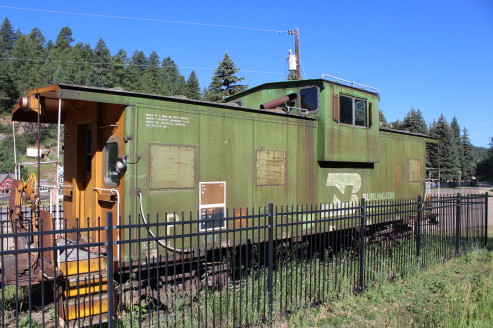
We pulled into the parking
lot and parked next to this caboose with Tiny Town across the
road. Using the big caboose as a Tiny Town landmark, I think. We
proceeded across the road and walked to the entrance gate. There
we were met and welcomed by the staff of Tiny Town. Chris had
made prior arrangements to visit and take photos. As it was
early morning when we arrived, the park was just starting to
wake up and the staff was doing their before opening duties.
First we were taken to the roundhouse and watched as the locos
were moved out and on to the turntable. From there we followed
them to the car barn and watched them assemble the train set.
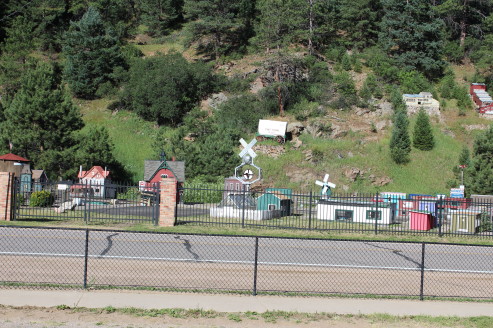
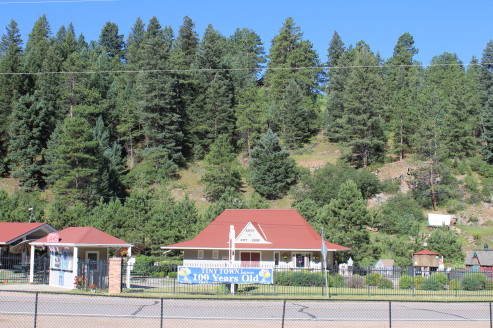
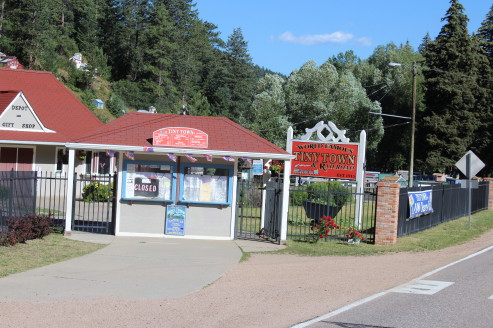
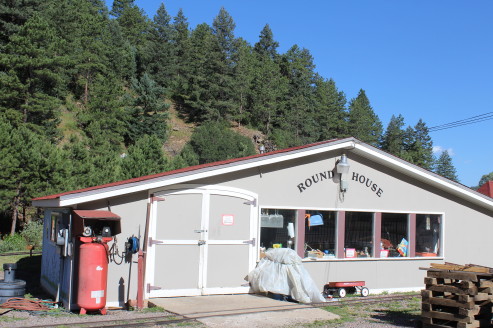
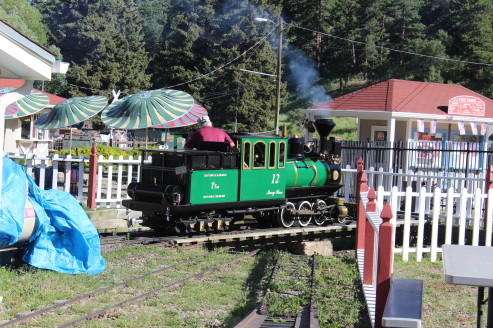
In 2014, Locomotive #12, the Mary Ross, was placed in service as
the newest engine used at Tiny Town.
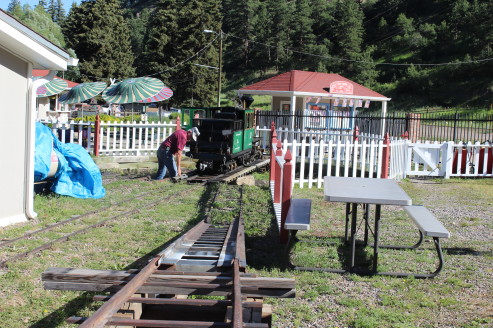
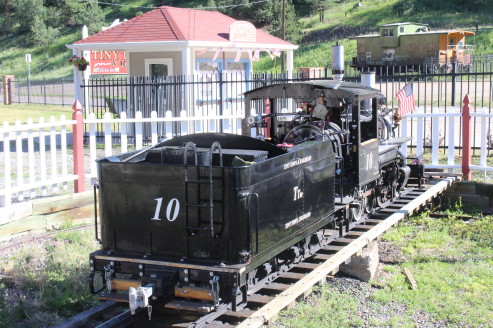
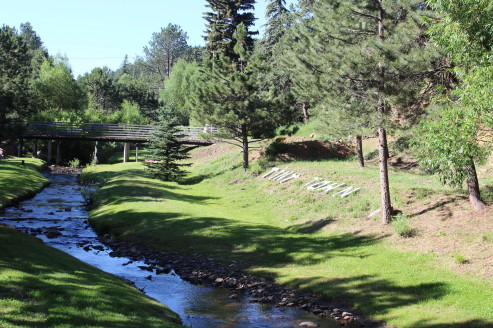
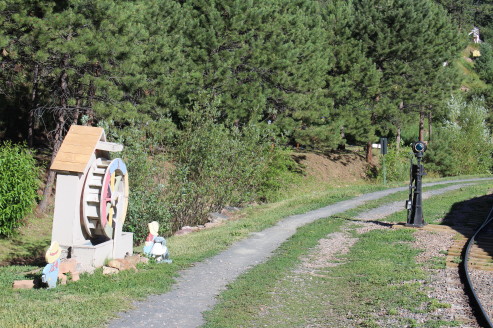
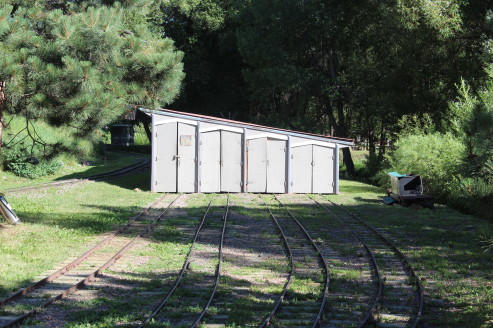
Car barn.
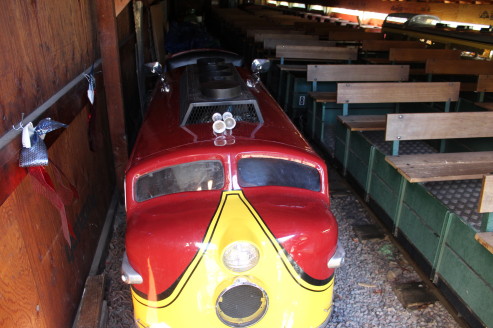
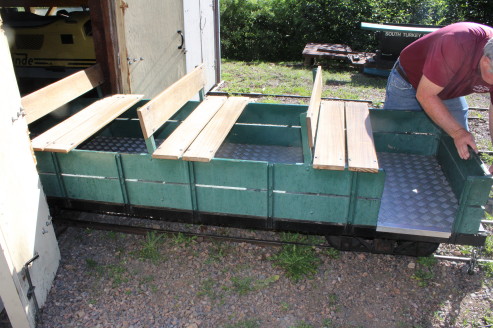
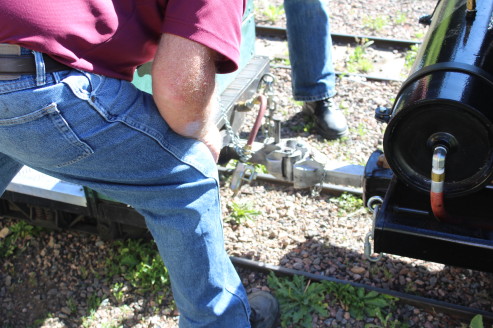
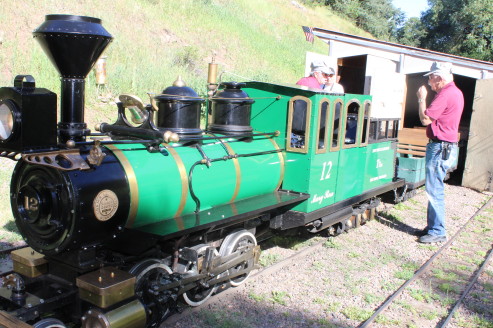
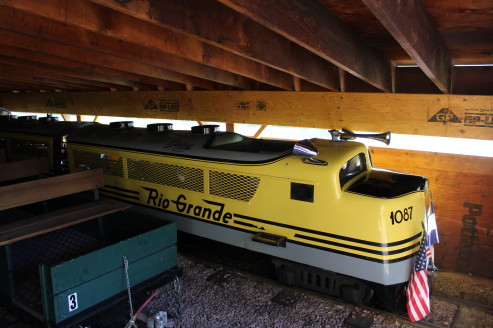
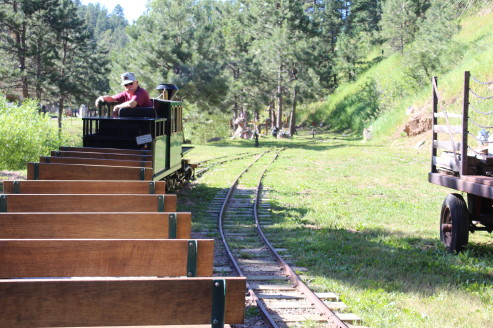
After the train was assembled Chris and I were invited to ride on
inspection and first ride of the day. Of course we accepted with
smiles.
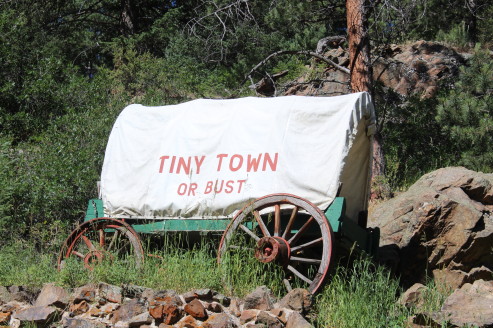
Tiny Town was created at the
site of the Denver - Leadville stagecoach stop in a scenic
mountain canyon southwest of Denver in 1914. That's when moving
company owner George Turner began erecting one-sixth sized
buildings with a turn-of-century flavor to delight his young
daughter.
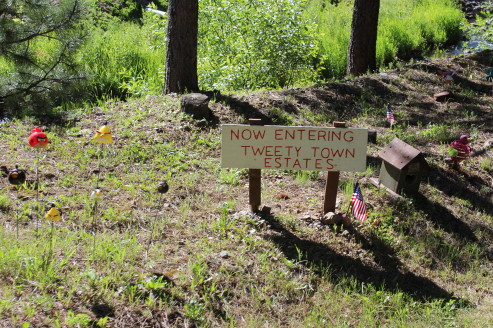
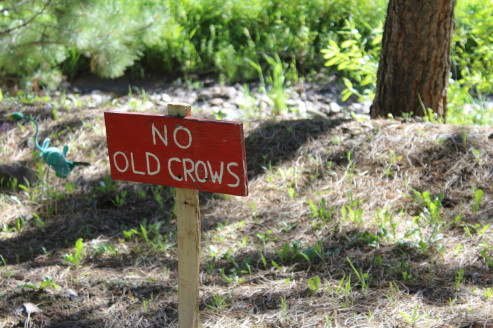
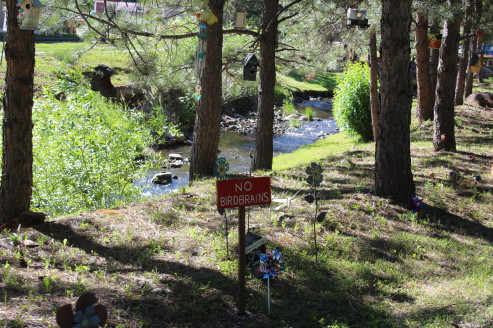
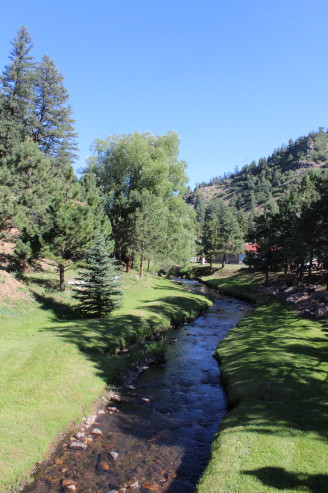
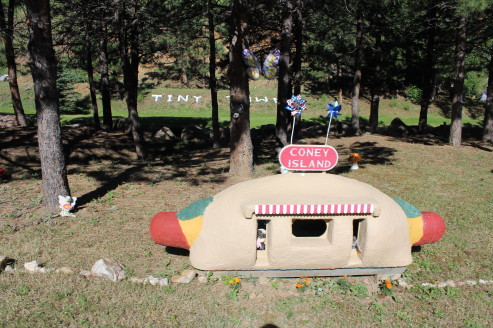
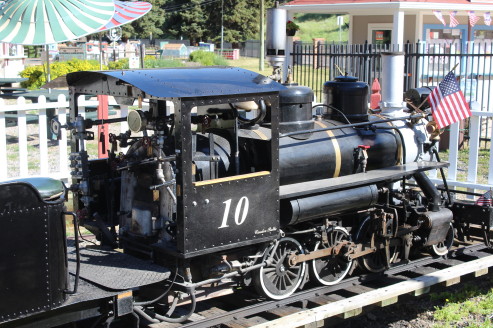
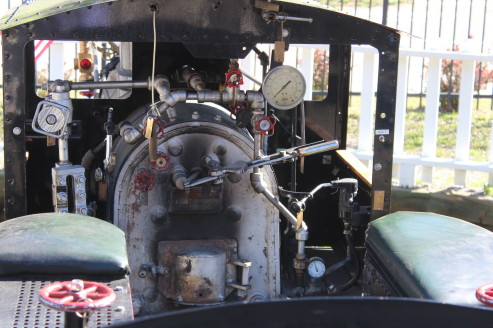
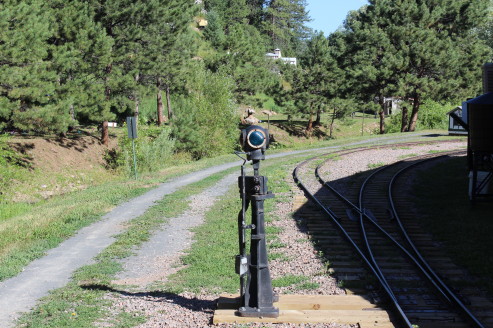
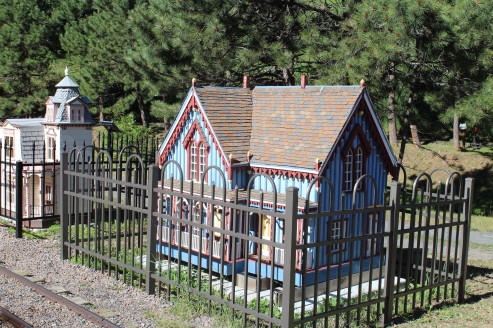
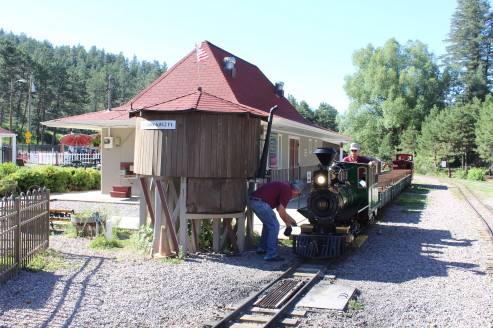
Train at station for check over.
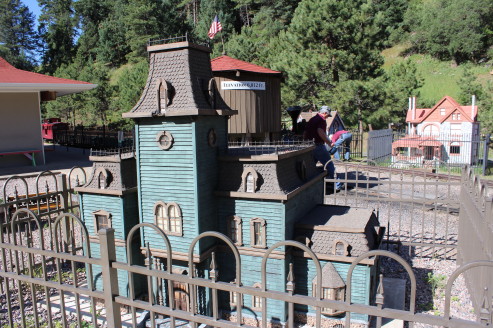
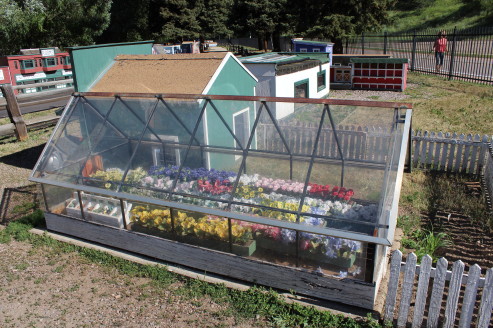
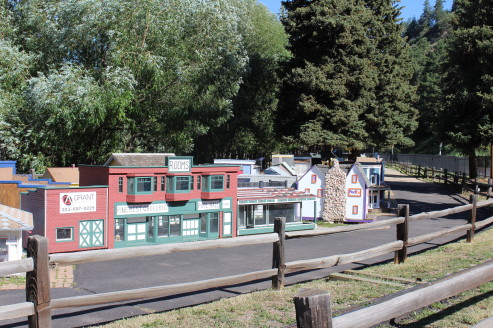
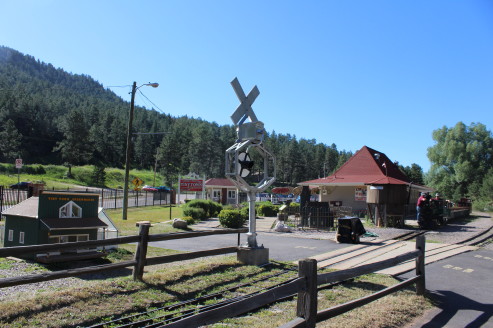
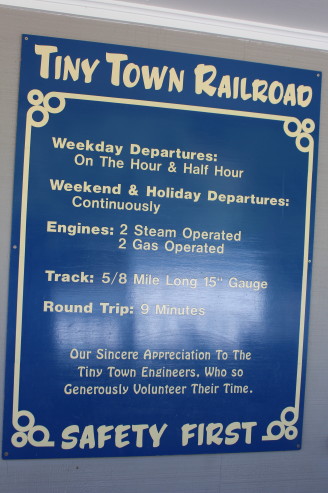
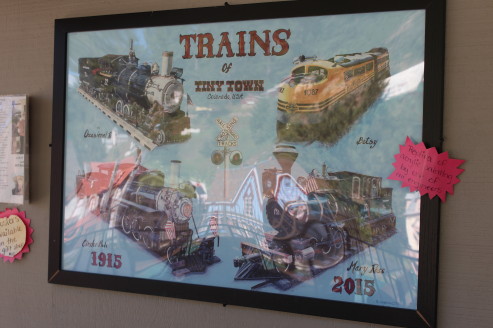
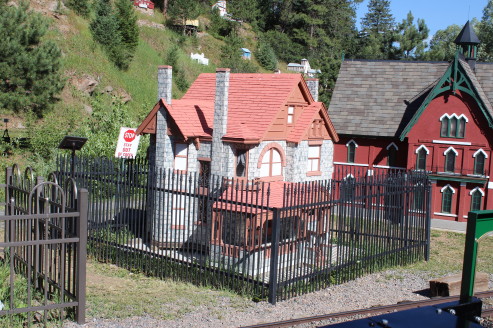
In 1920, the town was open to the public. In just five years, it
became one of Colorado's top attractions.
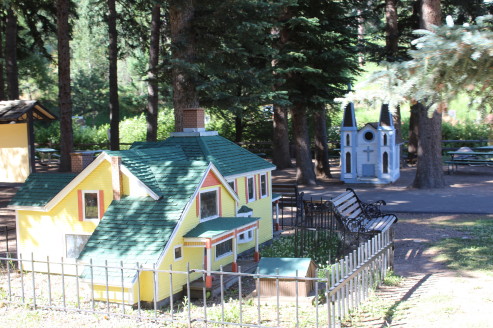
By 1939, the "World Famous" Tiny Town Railway was in operation. By
then Tiny Town was creating thousands of special memories for kids
of all ages.

However, the historic town was not without its setbacks as fires,
floods and changing economic times often kept this special place
on the edge of extinction.
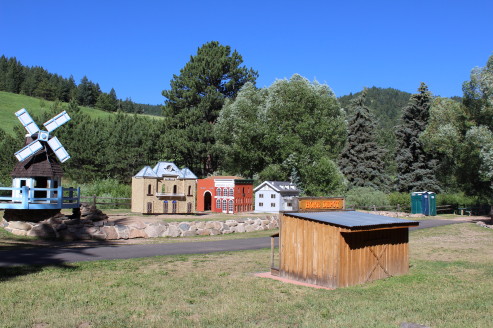
In 1988, volunteers adopted the resurrection of Tiny Town as a
civic, charitable project. Individuals from the entire state
refurbished original buildings, created new structures and got the
railroad up and running.
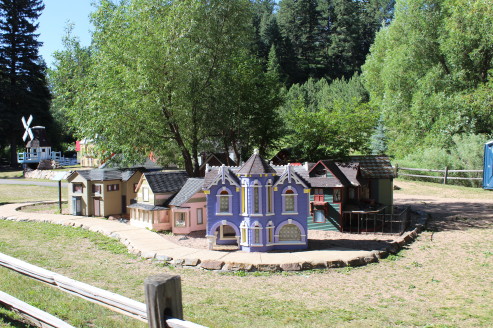
The Tiny Town Foundation was created in 1990 to establish Tiny
Town as not-for-profit and ensure the cherished village would
never be threatened again. Each year the foundation had been proud
to donate a portion of the proceeds to various area charities.
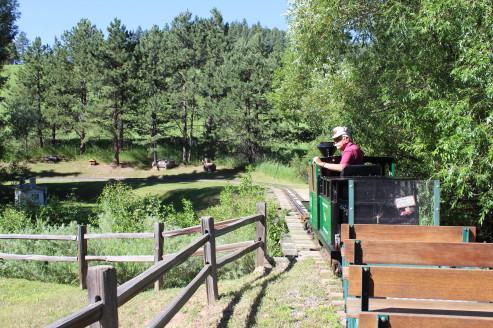
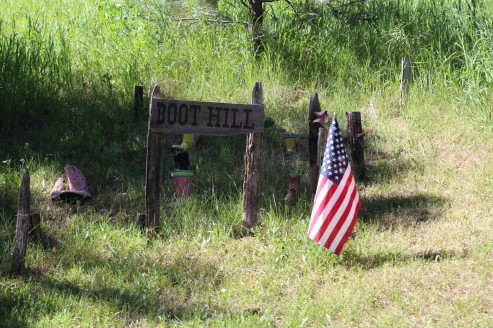
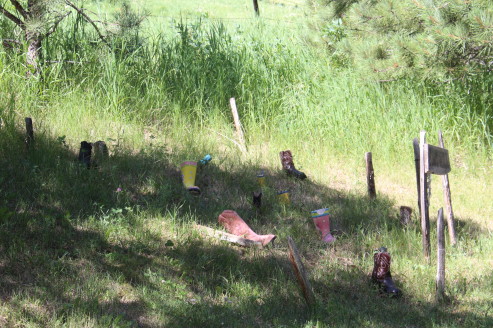
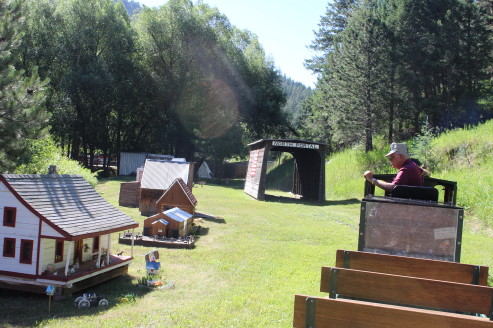
Tiny Town continues to grow each year with new buildings being
added to the park. In 2011, several buildings built by Tiny Town's
founder, George Turner, were found on a property nearby and
donated to Tiny Town, were restored and are on display as
Turnerville.
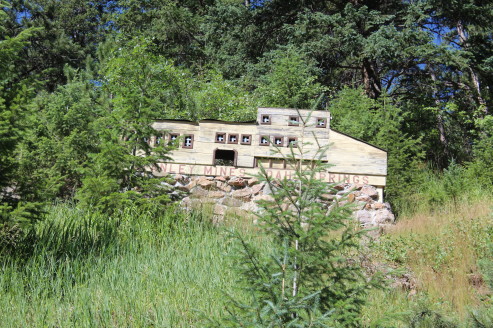
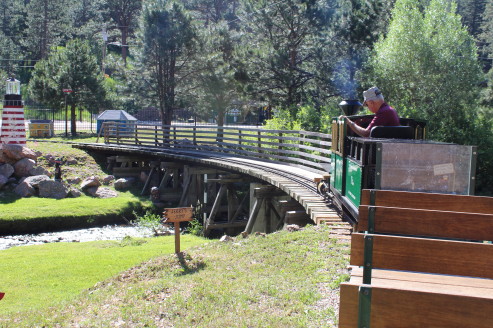
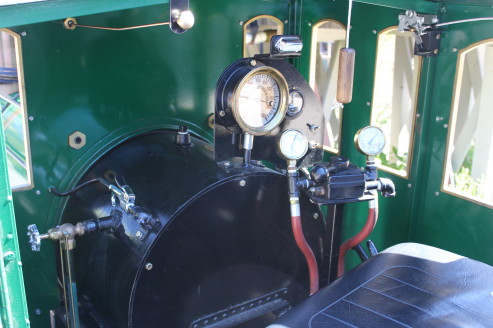
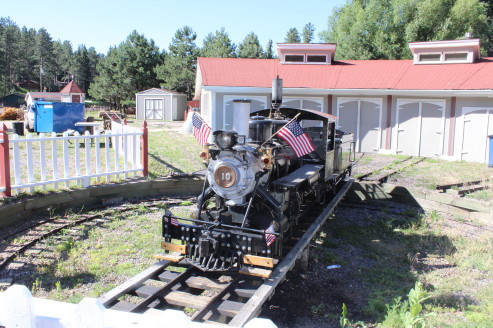
After our inspection ride we said our thanks and good byes to the
staff and special thanks to Stan and Dennis for showing us around
and answering our questions.
Leaving Tiny Town we rejoined Rt. 470 going north to I-70. At I-70
it was west to exit 243, Central City Parkway and to our next
stop.
Central City
Within weeks of John Gregory's discovery of gold in 1859, hordes
of prospectors were swarming over the steep sides of Gregory
Gulch, which soon earned the title "the richest square mile on
Earth." Although later eclipsed by the lodes at Cripple Creek, the
gold dug from Gregory Gulch amounted to more than $67 million.
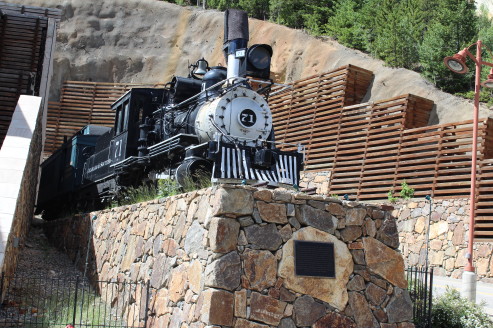
Central City, the middle camp among several that sprang up along
the precipitous gulch, soon absorbed its immediate neighbors.
Train loads of theatergoers came from Denver to enjoy Central
City's cultural advantages. In 1932 the Opera Festival featured
Lillian Gish in "Camille." The festival still attracts
crowds every summer in July and August.
With its preserved 1870s main street, Central City is part of a
national historic district that is surrounded by hills and dotted
with Victorian houses. Outdoors enthusiasts enjoy camping, hiking,
mountain biking and cross-country skiing. The city offers a
variety of museums, casinos and summer festivals.
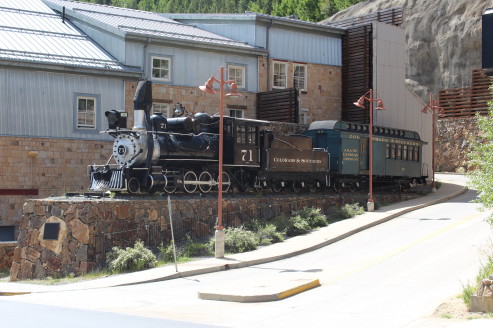
71 Colorado & Southern 2-8-0 built 1897 narrow (36")
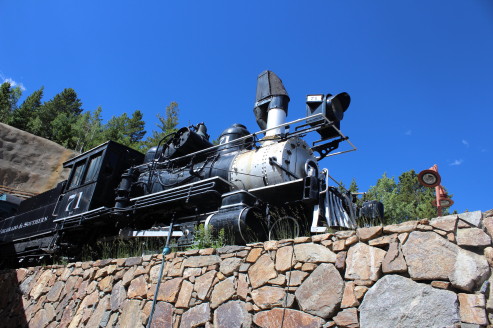
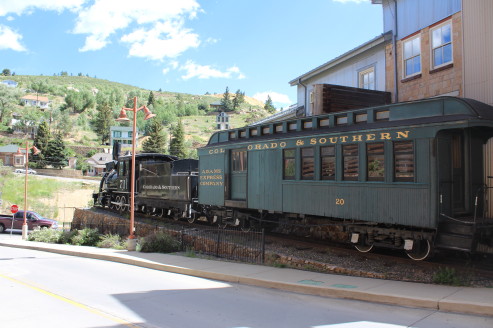
Colorado & Southern Combine 20.
From Central City we took Rt 119 south to our next stop in
Blackhawk, which has a good amount of gambling establishments.
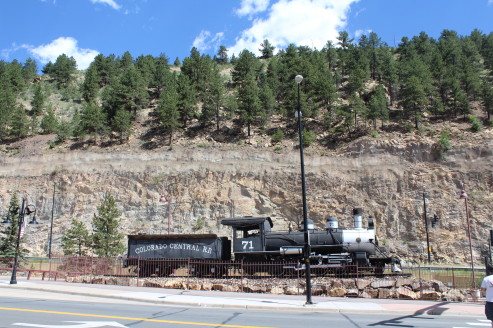
Located at Colorado Station Casino is 71 2-8-0 built 1911
narrow (36") gauge.
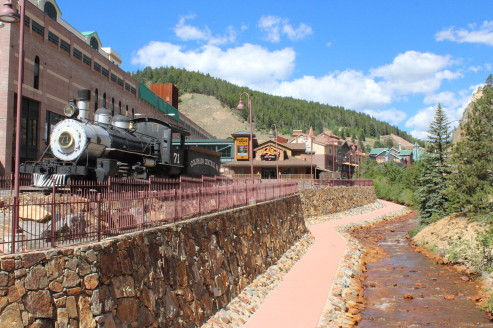
From Blackhawk we returned to Rt 119, then west on US 6 and
return to I-70 and exit at 240 and Idaho Springs.
As had the Ute Indians before them, bone-weary miners from the
nearby diggings soothed their aches in the mineral springs of
Idaho Springs. Known particularly for its radium hot springs, the
town has been a popular spa since the 1880s. It retains many
Victorian buildings and structures characteristic of the brick and
stone architecture on the 1880s.
The first major gold strike in Colorado was made in early 1859 at
the juncture of Chicago and Clear creeks; a monument less than
one-quarter mile southwest on Chicago Creek Road marks the spot.
More than 200 mines in the vicinity once produced silver, uranium,
tungsten, zinc, molybdenum, gold and lead.
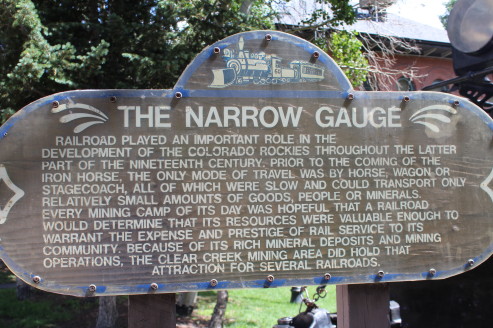
A relic of the early mining days is "Locomotive 60," which, along
with a coal tender and passenger coach of the Colorado and
Southern Railroad, stands on a section of the original narrow
gauge track in the downtown business district. The train made its
first run in 1886.
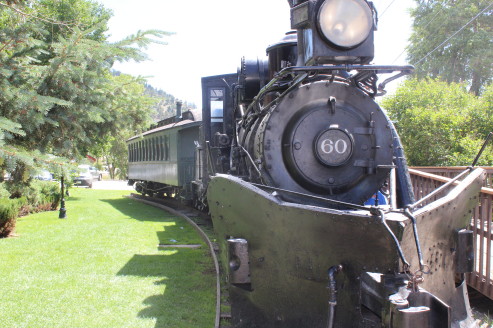
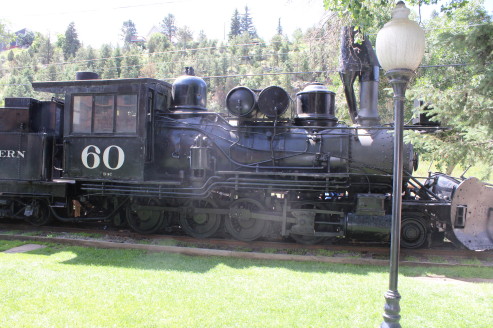
Harold E. Anderson Park 60 2-8-0 built 1886 narrow (36")
gauge.
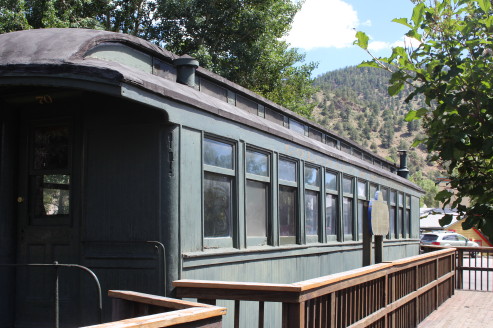
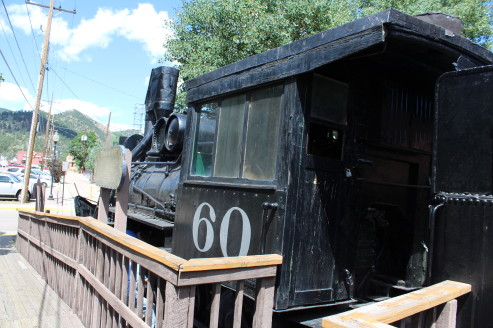
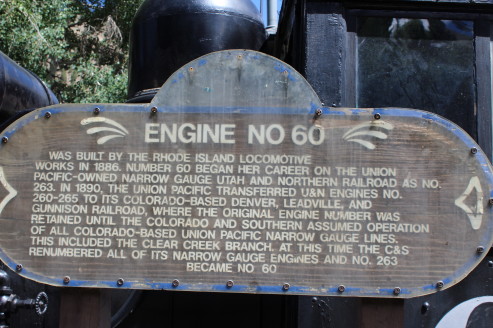
Leaving Idaho Springs we drove west on I-70 to Georgetown and the
Loop,
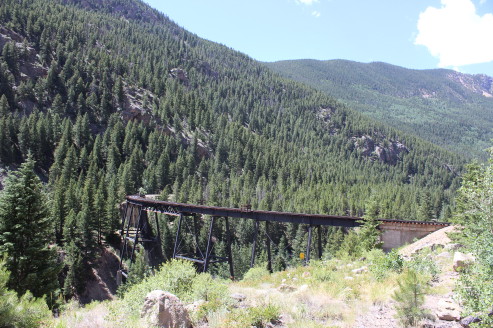
We parked near the bridge and climbed up the rocks to get a better
view for our photos.
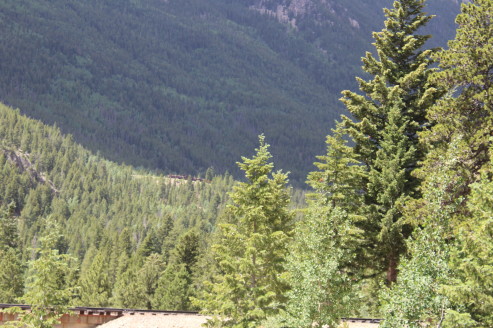
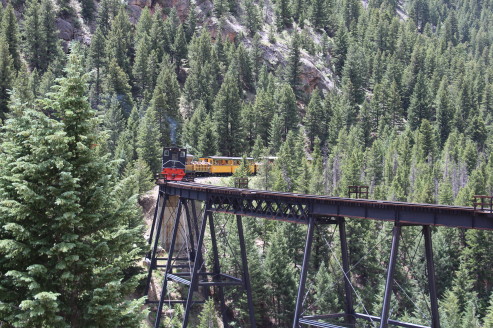
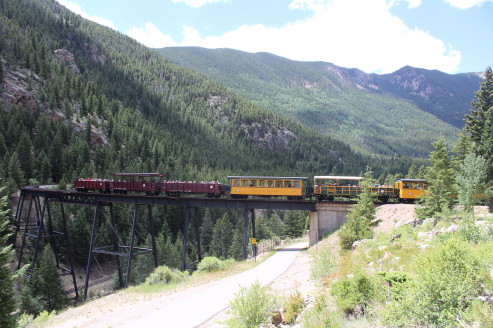
Devil's Gate High Bridge.
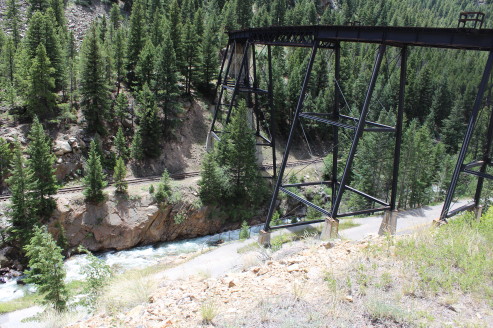
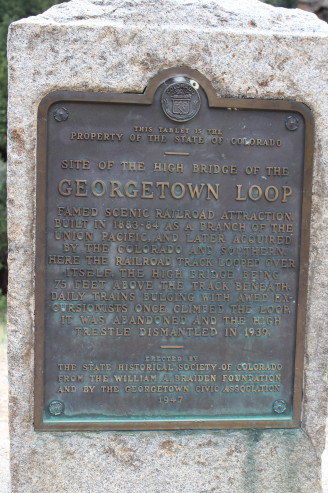
From our photo spot we returned to I-70 and went west to Silver
Plume at exit 226 for the Silver Plume Depot.
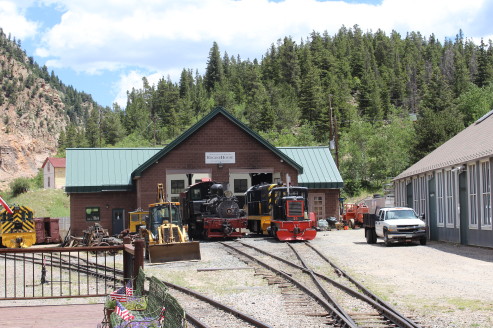
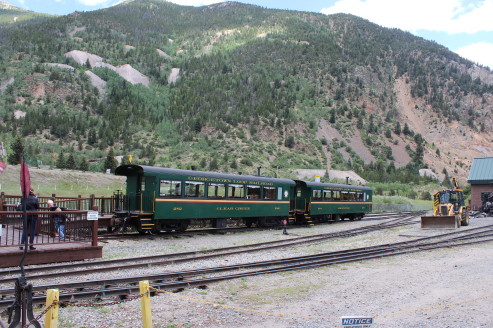
While we waited for our train ride we explored the area and their
museum.
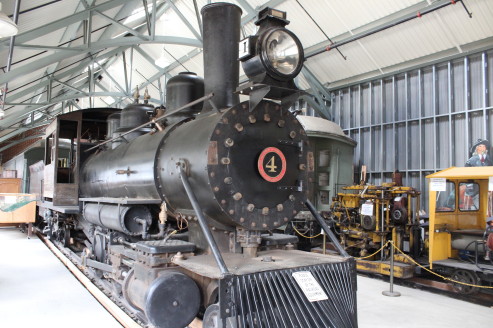
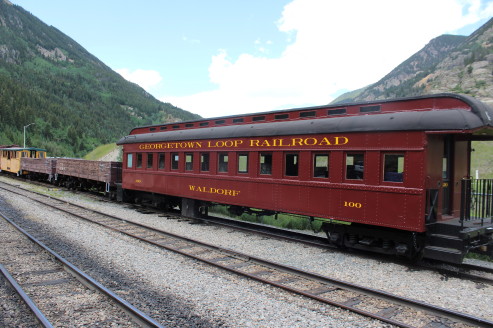
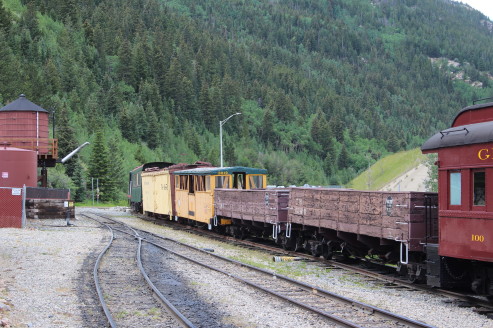
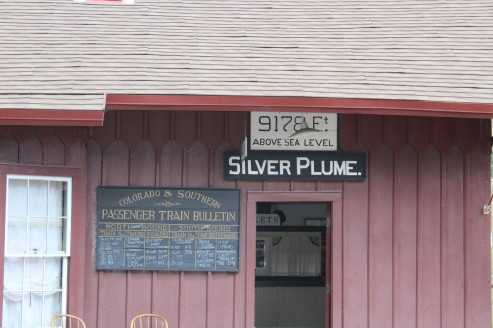
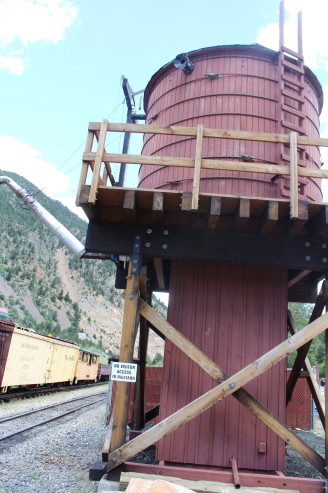
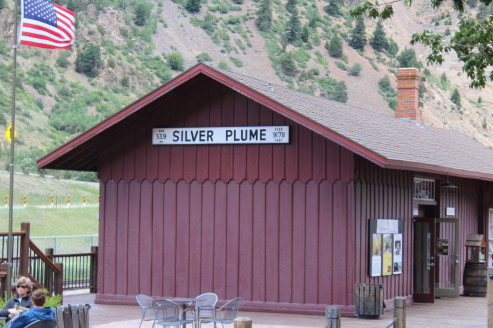
Our train left from the Silver Plume Station.
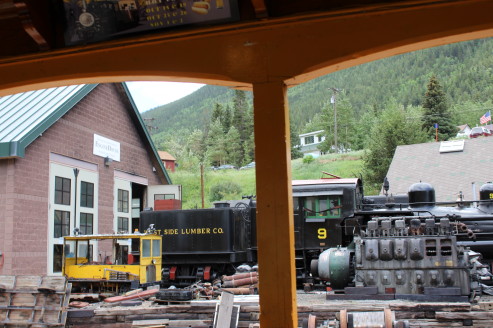
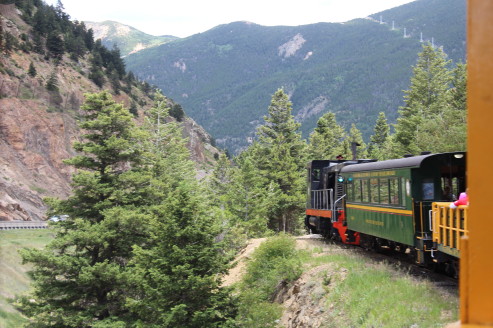
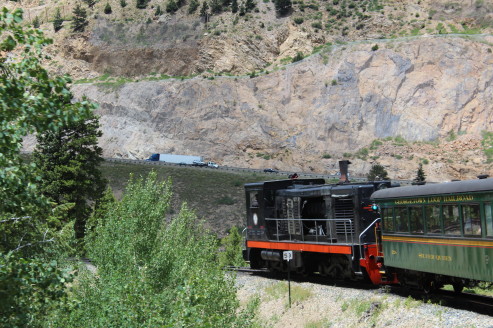
I -70 in background.
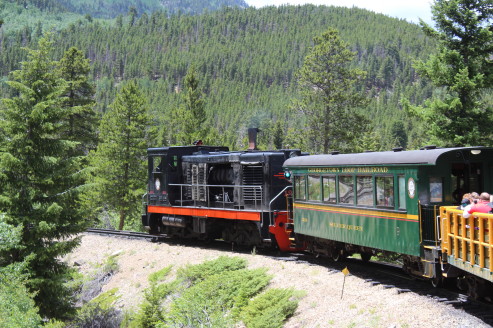
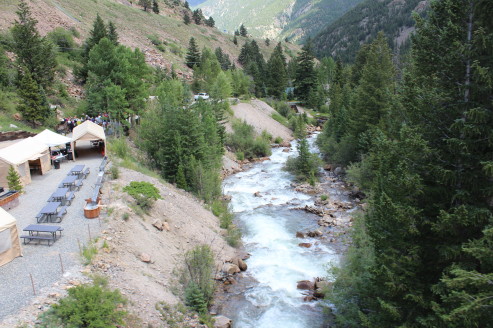
Lebanon Silver Mine next to Clear Creek.
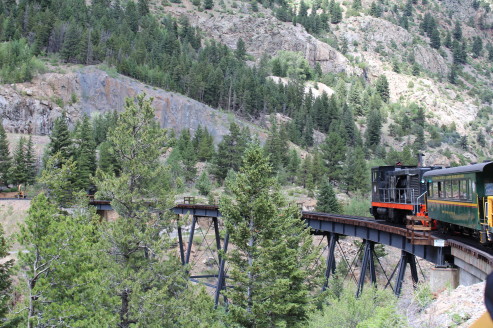
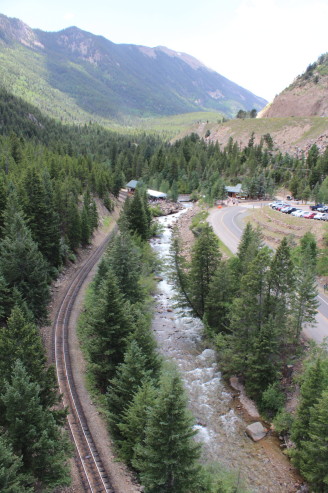
View from bridge of Clear Creek and Devil's Gate Station.
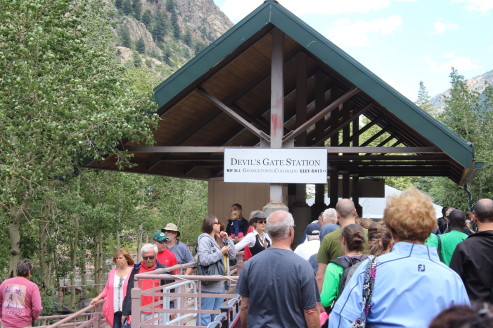
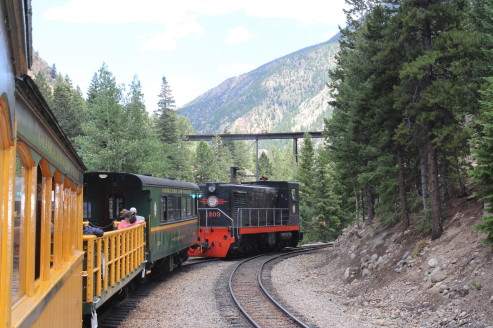
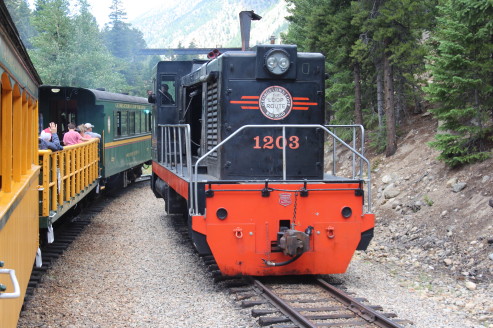
Loco switching ends on our train.
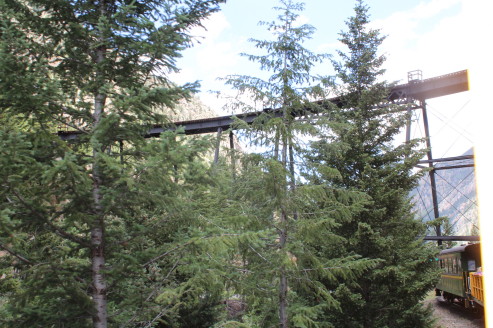
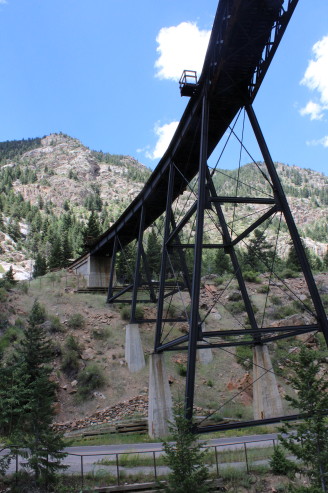
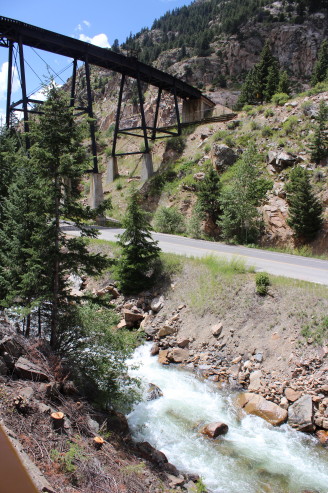
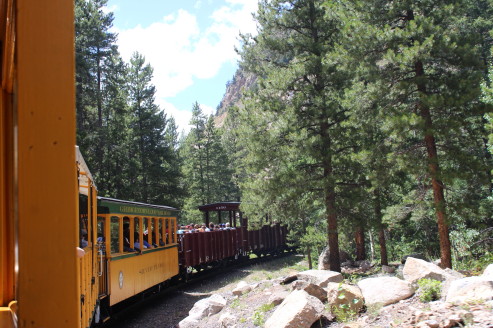
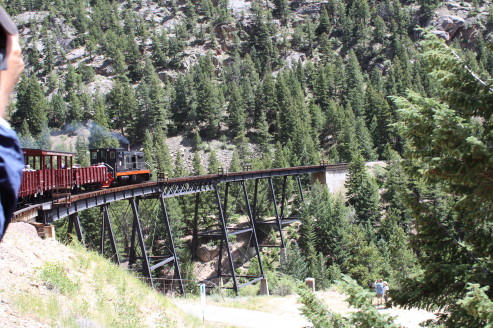
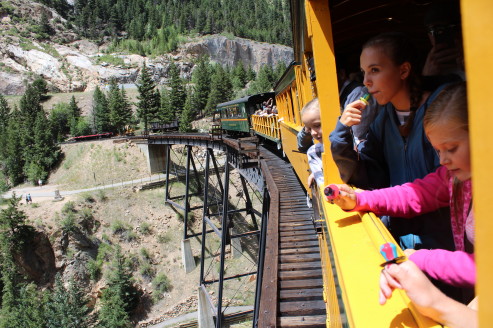
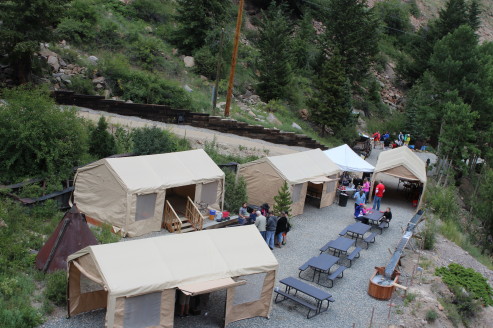
Passengers who stopped off to tour the Lebanon Silver Mine.

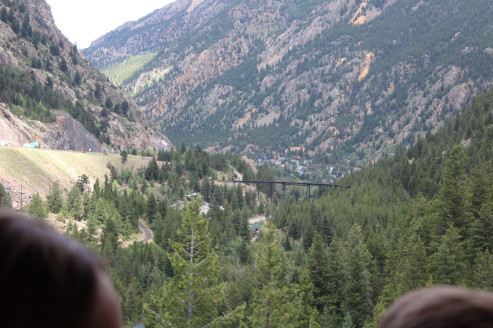
After our Georgetown Loop train ride we rejoined I-70 to I-76 to
I-25 north and then Rt 128 to Westminster and our Super 8 motel
for our night's rest.
Thanks for reading.
Text and Photos by Author
The author retains all
rights. No reproductions are allowed without the
author's consent.
Comments
appreciated at .... yr.mmxx@gmail.com